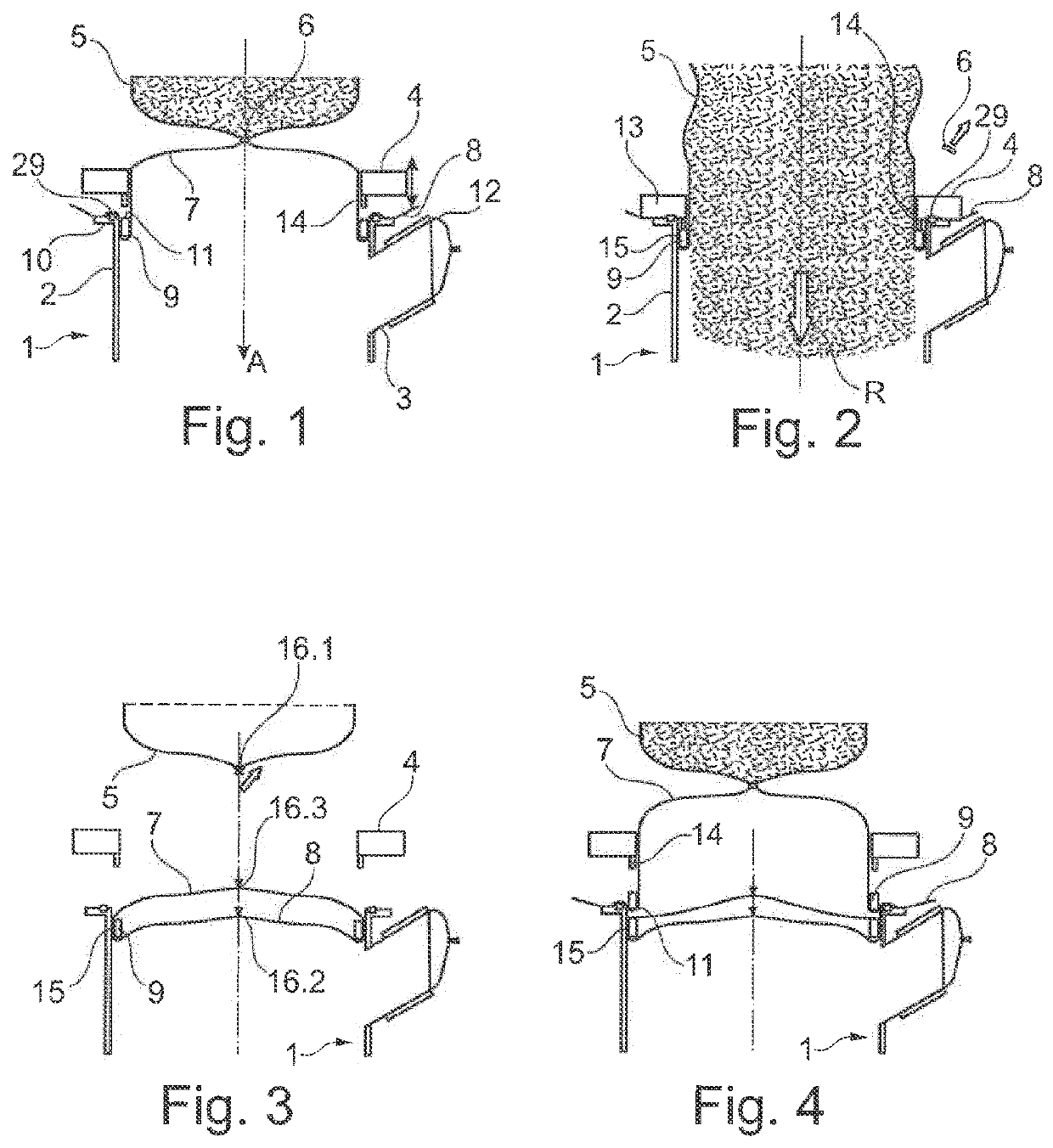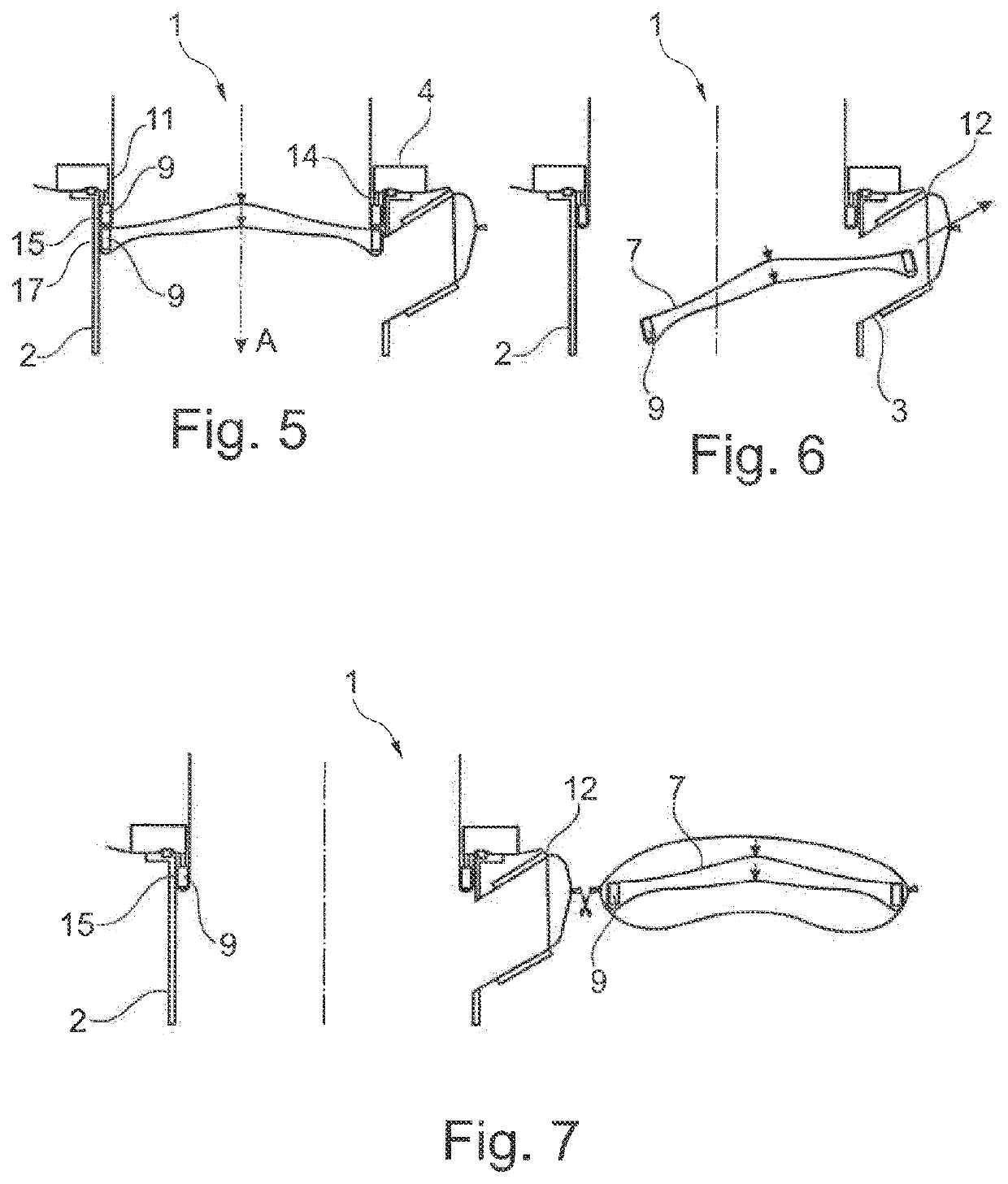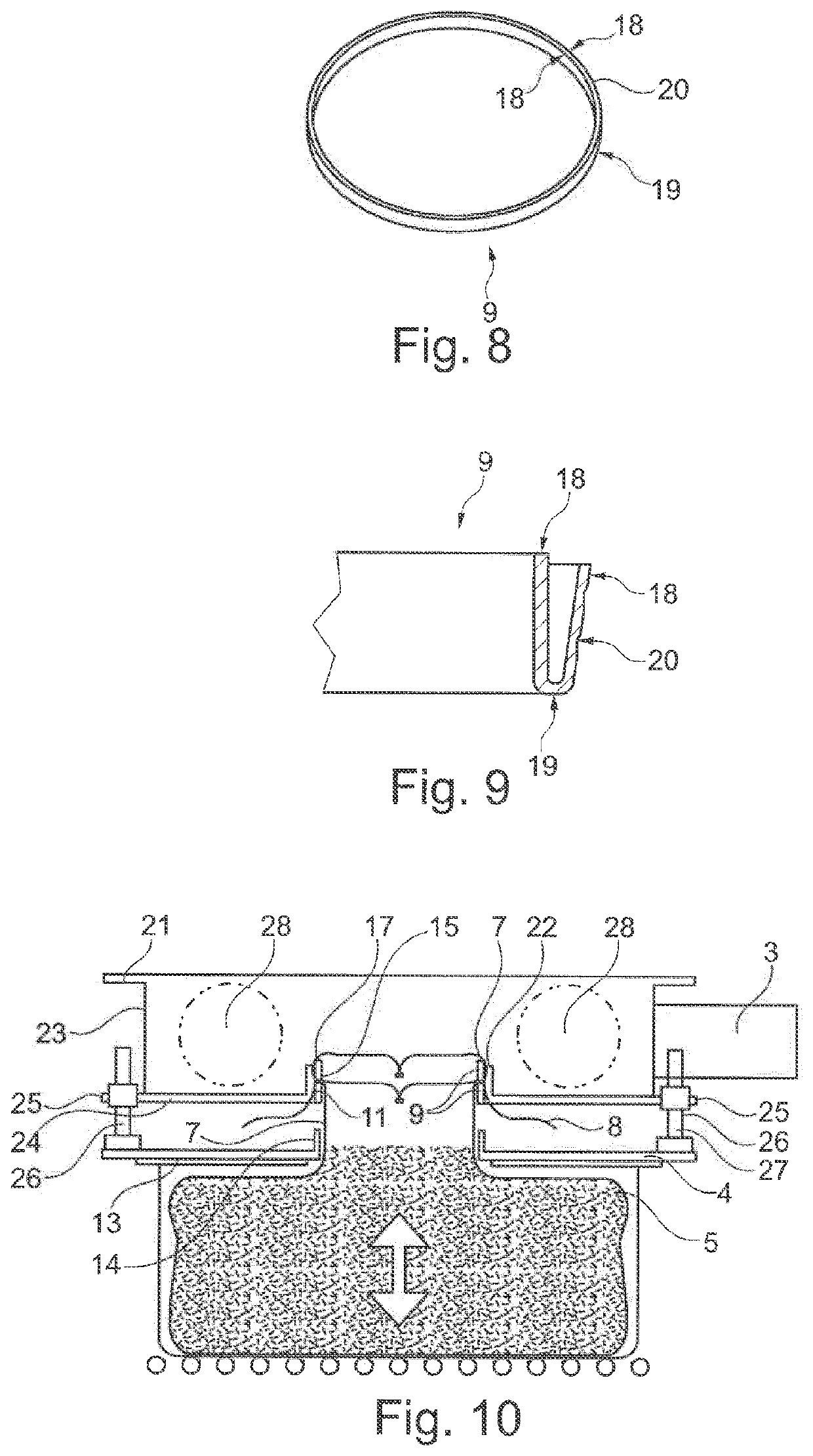Method and apparatus for filling and/or emptying flexible containers
a flexible container and filling technology, applied in the field of filling and/or emptying flexible containers, can solve the problems of prone to error, prone to loose substances, and relatively complex mechanisms, and achieve the effect of eliminating the risk of contamination of the neck eliminating the risk of contamination of the substance by the disposable fastening ring
- Summary
- Abstract
- Description
- Claims
- Application Information
AI Technical Summary
Benefits of technology
Problems solved by technology
Method used
Image
Examples
Embodiment Construction
[0063]FIG. 1 shows a filling and / or emptying device 1 which is to be referred to as device 1 below. The essential components of device 1 comprise filling and / or emptying neck 2 which is to be referred as neck 2 for short below. Furthermore, the device comprises a discharge channel 3 which is disposed on the side and a tool 4 which is displaceable in axial direction A and which is axially adjustable between an open position and a sealing position. In the illustration of FIG. 1, tool 4 is being displaced in the direction of neck 2 and is thus transferred from an open position into a sealing position which is reached in the situation of FIG. 2 and which will be described in more detail below.
[0064]FIG. 1 also shows a filled container 5 which is closed by means of a closure 6 in the method stage of FIG. 1. However, a container edge 7 disposed beyond closure 6 is folded over a disposable fastening ring 9 from the radial inside to the radial outside in a fold-over section 8, and radially ...
PUM
 Login to View More
Login to View More Abstract
Description
Claims
Application Information
 Login to View More
Login to View More - R&D
- Intellectual Property
- Life Sciences
- Materials
- Tech Scout
- Unparalleled Data Quality
- Higher Quality Content
- 60% Fewer Hallucinations
Browse by: Latest US Patents, China's latest patents, Technical Efficacy Thesaurus, Application Domain, Technology Topic, Popular Technical Reports.
© 2025 PatSnap. All rights reserved.Legal|Privacy policy|Modern Slavery Act Transparency Statement|Sitemap|About US| Contact US: help@patsnap.com



